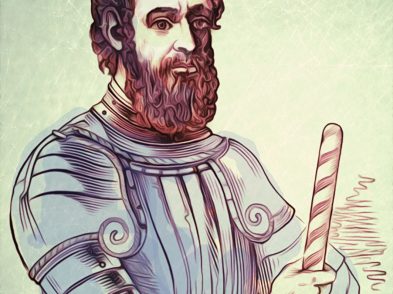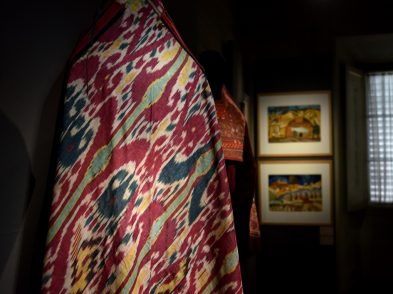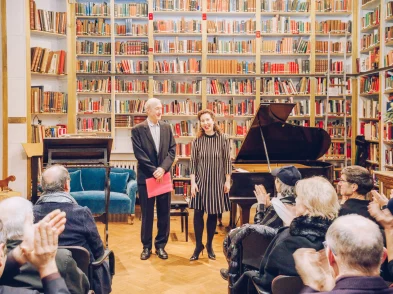A city famed for its
Renaissance sculpture, Florence also hosts interesting works by female
sculptors. Following what she has coined the Women Artists’ Trail, TF’s culture
editor Jane Fortune scouts out two little known examples of sculpture by women.
Adelaide Pandiani Maraini at the Allori Cemetery
I have written briefly
in the past about women sculptors who lived or worked in Florence in the
nineteenth and twentieth centuries (see TF 64). One sculptor I have since
learned more about is Adelaide Pandiani Maraini (Milan, 1843-1917). Like many
female sculptors of her generation, her father, professional sculptor Giuseppe
Pandiani, was her first master. At the time, few women from families without
male sculptors had wide-ranging access to this traditionally all-male
profession. In Florence, she trained under Lorenzo Bartolini and renowned
sculpture Giovanni Duprè (who also trained his own daughter Amalia).
Pandiani Maraini
worked in both Rome and Lugano, but most of her collection is in Switzerland,
where she became a citizen in 1862. In Rome, her marble statue Salummite Woman can be found in the
atrium of the Palazzo Civico and her Te
Precor is in the neoclassical Civic Museum. Her most famous piece, Sappho, is also in Rome. In storage at
the National Art Museum, it is a later rendition of her teacher Giovanni
Dupre’s sculpture on the same subject. Pandiani Maraini’s Sappho was exhibited at the Third World Fair in Paris in 1878 at
the same time the Statue of Liberty’s head was being unveiled in America.
It was the one of the most admired pieces of the Fair. Displayed in the Salone
Italiana, the stunning, albeit small, marble statue was named after Plato’s
‘tenth muse,’ a Greek lyrical poet who, according to legend, inspired Athenian
historian Solon to be taught one of her songs, so he could ‘learn it and die.’
Her wide acclaim was not a surprise as her father, uncle and cousin all carved
professionally-a family tree sculpted in stone!
The artist’s
industrialist husband, Clemente Maraini, headed Rome’s left wing newspaper, Il Diritto, and she participated in
neo-feminist activities and served as president of the Society for Women’s
Education, where she met writer Carlo Dossi, who spoke there. They became very
close friends, and his Note Azzurre (1870-1907) provides most of the information now known about her personal life
and character. Partially published in 1912, Dossi’s poignant and often
haphazard notes reveal his genuine affection for Pandiani Maraini, who as a
child was filled with melancholy (her father was a neurotic) and a desire for
death, which, as she aged, never completely waned. In Florence, her letters to
high-ranking political officials can be studied at the Marucelliana Library and
as part of the Gabinetto G.P. Viseusseux’s Fondo Arnaldo Cervesato. In the
Allori Cemetery, you’ll find her monument to Attilo Lemmi, Youth Weeping over the Tomb of the Dead. It is in dire need of
restoration.
Antonietta Raphael Mafai at the Oblate
A short walk from
piazza Duomo to via dell’Oriuolo, the Biblioteca delle Oblate, a thirteenth-century
building, formerly a convent, is now a library and cultural center. Here,
antiquity and modernity happily coincide: its cloisters and loggias are one of
the few places in Florence where you can find examples of large-scale
twentieth-century sculpture. On the second floor stands figurative bronze
sculpture, Maternity by Antonietta
Raphael Mafai (Kaunas, 1895-Rome, 1975), a Lithuanian visionary artist and one
of the 80 women who offered their art to the city as a sign of solidarity
following the Arno’s catastrophic flooding in November 1966.
The 13th daughter of
Jewish Rabbi Simon Raphael, Antonietta Raphael fled her native Lithuania in
response to anti-Semitic riots condoned by the Russian Empire during the
pre-Bolshevik period. After lengthy sojourns in London and Paris, she moved to
Rome in the early 1920s. Inspired by Mussolini’s rhetoric, many artists in the
capital sought to uphold neoclassic canons recalling the ancient empire’s glory
days. Only a handful of artists sowed the seeds of counterculture, gathering in
the large terraced studio where Antonietta Raphael and Mario Mafai, then
lovers, lived and painted. The couple championed a style that has come to be
known as ‘la Scuola di via Cavour,’ named for the street of their studio.
Raphael’s Eastern European heritage, the expressionist influence she had
absorbed in France, and the refusal to downplay her fascination for themes like
femininity and religion: all these brought her acclaim in Italy.
Antonietta Raphael
began attending an evening school for sculpture in the early 1930s. It was not
long before fellow artist Marino Marini, a giant of twentieth-century
classic-archaic sculpture (see TF 43, 53, 143, 165), acknowledged the strength
of her work in a comment meant to underline her indisputable artistic vigor, ‘Lei non è
scultrice, è scultore, signora: non deve aver paura di chiamarsi scultore’ (‘You are not a sculptress, you are a [male] sculptor,
madam: you needn’t be afraid to call yourself a sculptor’). Both artists shared
a bold interest in expressionist figures and a deep love for sculpting the
female body.
Marini made this
comment in 1938. Within a year, Mussolini’s government passed Racial Law 29,
which banned exhibiting Jewish artists. Antonietta Raphael fled to Genoa
with her daughters, where she continued to sculpt under the protection of
collector Emilio Jesi and Alberto della Ragione. (Her stoic Brazilian onyx bust
of Jesi and varnished bronze statue of his mother, both in storage as part of
Florence’s civic collections, were produced in the 1940s). Once a preeminent
professional, now an ostracized religious refugee, Antonietta Raphael
never stopped celebrating the conflicted, ever-renewed nature of humanity.
Though mythological themes form a significant portion of her oeuvre, the vast
majority of Raphael’s sculptural works, in bronze, painted gesso and wood are
profoundly inspired by the idea of motherhood. The sculpture in the Oblate is a
representative bronze, showing a young, nude mother half-kneeling before her
toddler son. ‘For maternity, I mean the beginning of the world,’ the artist
wrote, ‘the beginning of things…of all things.’








